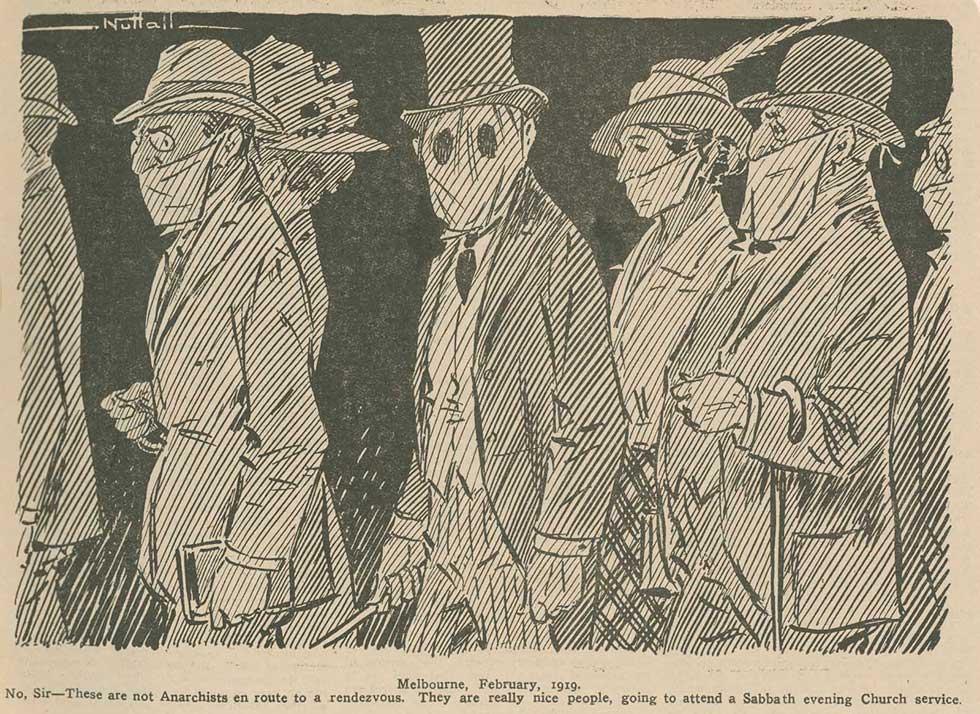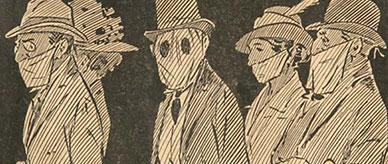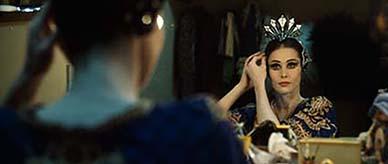


About this record
This is a newspaper illustration published in 1919 by cartoonist Charles Nuttall showing 7 well-dressed men and women on their way to a church service wearing face masks to protect them against the recent Spanish influenza (flu) outbreak. The caption below the drawing reads, 'Melbourne, February, 1919. No Sir–These are not Anarchists en route to a rendezvous. They are really nice people, going to attend a Sabbath evening Church service.'
Educational value
- The illustration depicts the preventative measures being taken and the atmosphere of fear caused by the arrival of the deadly Spanish flu pandemic in Melbourne. Government authorities had put in place strict quarantine procedures in order to limit the disease. As a consequence of these effective measures, the Spanish flu did not reach Melbourne until December 1918, some months after it had already swept through Europe and many other parts of the world.
- The face masks were part of the preventative measures taken by the government to limit the spread of the influenza pandemic. It was compulsory to wear masks in public places, and passengers were refused access to public transport without them. Schools were closed and sporting events were cancelled. Soldiers returning from the First World War were quarantined, in some cases for months, before being allowed back into the country. Many public activities such as cinemas and races were banned or restricted.
- The illustration shows people wearing face masks on their way to a church service. With public meetings of 20 or more people prohibited, churches had to adapt in order to hold services. Masks had to be worn by all churchgoers and some churches held their religious services outdoors. The ritual of sharing a common goblet of wine in the service of the Holy Communion was often replaced by the practice called 'intinction', in which the bread is dipped in the wine.
- The illustrator likens the well-dressed people on their way to church to 'Anarchists' – political agitators opposed to the governments of the day and responsible for staging violent acts such as bombings – for comic effect. Their faces are covered by what appear to be homemade half masks except for one man whose whole face is covered. The act of covering one's face is usually equated with having something to hide, such as one's identity when engaged in lawless or terrorist-like activities.
- The 'Spanish flu' was so called because Spain was the first place the outbreak was noticed in 1918, and it killed 8 million people in Spain alone. Between 1918 and 1919 the pandemic was spread across the world in 3 waves by soldiers returning from the First World War. Mainly affecting young healthy people aged 15–35 years, the pandemic killed at least 20–50 million people worldwide, more than the total number killed in the war. In Australia, some 12,000 people died.
- Charles James Nuttall (1872–1934) was an artist, cartoonist and journalist who contributed to the Melbourne Punch and to the Sydney Bulletin. Due to colour-blindness, he specialised in black-and-white or monochrome drawings. This cartoon bears his typical signature, 'Nuttall'. He made his living from etching, painting, writing and illustrating books, postcards and comic drawings. In 1901 he was commissioned to create a painting of the first federal parliament of Australia, depicting as many dignitaries as possible.
Acknowledgments
Learning resource text © Education Services Australia Limited and the National Archives of Australia 2010.
Related themes
Need help with your research?
Learn how to interpret primary sources, use our collection and more.


